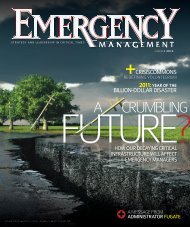APPENDIX BAll curb boxes indicated on the plans shall be as follows unless otherwise noted:1. For streetlight - size No. 5.2. For Traffic Signal – size No. 63. For Tesco Panel – size No. 64. For Traffic Signal Interconnect – size No. 6ADD NEW SUBSECTION 307-11.2 TO READ:307-11.2 Payment: The unit price of pull boxes shall include full compensation to furnish all labor, materials,tools, equipment, and incidentals required to install pull boxes, complete in place, in accordance with thePlans, Specifications and Standard Details. The work includes, but not limited to, pothole investigation,removal of existing pull box, saw cutting concrete and asphalt pavement, furnishing and installing pull boxes,excavation and backfill, disposal of materials, restoring sidewalk, curb ramp, pavement, stripping, andappurtenance damaged during construction.ADD NEW SUBSECTION 307-11.4 TO READ:307-11.4 Relocating and Replacing City Utility Boxes. The bid item Replace/Relocate City Utility Boxpays for the relocation of an existing City utility box where it unavoidably conflicts with the construction of anew curb ramp. In most cases, the Contractor shall construct extra wide central ramp areas in order topermit existing City utility boxes to remain in place. (See Subsection 303-5.5.3.2) However, in certainsituations replacement or relocation of the City utility box is necessary, as shown on the plans. TheContractor shall coordinate this work with the various utilities and agencies as necessary.The Contractor shall perform the City utility box relocation and relocation work resulting from theconstruction of new curb ramps in accordance with the plans and specifications. Traffic loops, video cameracables, traffic inter-connect cable and fiber optic cable shall not be spliced except where there are currentsplices. Traffic signal cable may only be spliced with the Engineer’s approval and if splice chambers areinstalled.Payment: The Contract Unit Price paid for each Replace/Relocate City Utility Box shall include fullcompensation for furnishing labor, materials, w ater, tools, and equipment, and doing all the w orkinvolved in relocating and replacing the City utility boxes (including utility coordination, installation ofconduits and cables of varying sizes and lengths, installation of various traffic signal and street lightingcables and conductors, splicing all necessary cable and w iring as permitted by these Special Provisionsand the Engineer) and performing all the incidental w ork connected therew ith as show n on the plans,City Standard Details, the Standard Specifications and these Special Provisions.307-12 CONDUIT.REPLACE THE FIRST SENTENCE IN THE SIXTH (6 TH ) PARAGRAPH TO READ:307-12.1 General.Detector, telephone interconnect, or street lighting conduit shall be 2-inch (50mm) nominal size unlessotherwise specified in the Plans, Standard Details and/or Special Provisions. Direct interconnect, utilityservice, inductive loop detector or traffic signal conduit shall be 3-inch (75mm) nominal size unless otherwisespecified in the Plans, Standard Details and/or Special Provisions.ADD NEW PARAGRAPHS AT THE END OF SUBSECTION 307-12.1 TO READ:307- 12 General. Unless otherwise approved by the Engineer, HDPE conduit shall be joined with the buttfusion techniques.Mandrels shall be at least three inches long and shall have a diameter that is at least eighty percent(80%) of the inside conduit diameter. Any conduit run which will not allow the mandrel to pass will not beaccepted until the obstructions have been corrected.Conduit laid in open trench shall not be covered nor shall any trench or inspection hole be backfilled untilthe Engineer has approved the installation.Conduits terminating in a curb box shall be brought into the box on a gradual upward sweep of up to 45degrees. The Engineer will not permit any 90-degree bends into the box bottom. The conduit shall notextend into the box more than 2" beyond the inside face of the box. Longitudinal conduit runs entering curbboxes shall enter at their respective ends of the curb box. Lateral conduit runs shall enter at the respectiveside..<strong>Oakland</strong> <strong>Street</strong> <strong>Lighting</strong> <strong>Conversion</strong> <strong>Project</strong><strong>Project</strong> Special Provisions D-35 Bid Documents: Feb 2012 Update
APPENDIX BThe conduit runs shall be as shown on the attached plans. The line to be followed by each run ofconduit, as indicated on the plans, is necessarily approximate. The Contractor shall determine and makesuch deviations from the lines indicated on the plans as may be reasonably necessary in order to clear otherunderground utilities or structures, subject to the Engineer’s approval. It is not contemplated or intended thatany existing underground pipes, conduits, or other existing underground structures shall be changed ormoved in order to permit carrying out the work covered by these specifications.a. All conduits shall be installed beneath official sidewalk or roadway areas excepting riser conduits.Conduit placed in the ground under sidewalks shall, as far as practicable, be placed at a minimumdepth of 18-inches below adjacent curb grade. Conduit under sidewalks shall be placed as near theadjacent existing curb position as is practicable without making repeated bends to clear poles, watermeters, and similar obstructions.b. Conduit may be laid on top of the existing pavement within curbed medians being constructed on topof said pavement.c. Conduit placed under existing pavement may be installed by means of a rock-cutting trencher.Conduit shall be placed at a minimum depth of 18 inches below the roadway surface, with aminimum 6" concrete cap on top of conduit.The Contractor shall install as per Plans, Specifications and Standard Details and be entirely responsible forthe correct conduit installation method i.e. open trench, in pavement cuts, or in holes bored through theground from one excavation to another.The following restrictions shall apply in appropriate circumstances:a. The Contractor shall consult with the proper utility companies or agencies to determine the locationof their conduits, ducts, underground pipes, cables, sewers or other underground structures.b. The Contractor shall open, by hand digging, test holes to locate existing conduits, cables, sewers orother underground structures which could be damaged by the new installation.c. No conduit shall run through catch basins, drainage ducts or other underground installations.d. The Contractor shall have full responsibility for repairing any underground structure damaged byoperations.e. The City shall have the right to require any additional inspection holes the Engineer finds necessary.f. Tunneling under streets or trenchless boring will be allowed in accordance with the Plans andSpecifications, and as permitted bythe Engineer. The Contractor is required to obtain video scan ofall sewer laterals before commencement of the boring and at the end of the bore and per thedirection of the Engineer.g. Each conduit run terminating in a Pacific Gas and Electric (PG&E) Company structure shallterminate not less than one-half (1/2) inch or more than one inch short of the inside wall, leaving arecess which shall be grouted smooth into a funnel shape. The Contractor shall schedule and meetwith PG&E to determine the exact location where the conduit will terminate in the PG&E structure.The Contractor shall repair any damage to the structure walls to the satisfaction of PG&E.Extreme care must be exercised to avoid stepping on cable or supports or otherwise injuring cables. Nosmoking or other open flames will be allowed in manholes.307-13 WIRES, CONDUCTORS AND CABLES.ADD NEW PARAGRAPHS TO THE END OF SUBSECTION 307-13.1 TO READ:307-13.1 General.a. Wire and cable shall be installed in continuous lengths from luminaire to curb box and from curb box tocurb box without intermediate splices.b. The Contractor shall provide sufficient slack wire in curb boxes so that finished loops may extend at leasttwo feet beyond the enclosure limits.c. Wire, cable and pull the tape or rope shall be carefully pulled in at the same time so that crossings andwrapping are avoided. The conduit system is designed as a multipurpose system; additional electricsystem will be installed in available conduit space.d. Cable entering a curb box shall be protected from water during the construction period. The Contractormay be required to replace part or all of a cable length when an unprotected end has been in water.e. Splicing chambers and fuse kits shall be carefully assembled so that they are watertight.f. The Contractor shall seal conduit ends with sealing compound after wire is installed. Sealing compoundshall be non-hardening, putty-like, adhesive material.g. Water and/or a special lubricant approved by the Electrical Services Division are the only permissiblelubricants.<strong>Oakland</strong> <strong>Street</strong> <strong>Lighting</strong> <strong>Conversion</strong> <strong>Project</strong><strong>Project</strong> Special Provisions D-36 Bid Documents: Feb 2012 Update
- Page 1 and 2:
City of OaklandDeanna Santana, City
- Page 3 and 4:
I. REQUEST FOR PROPOSALS SUMMARYPro
- Page 5 and 6:
6. Capture of Savings. Document sav
- Page 7 and 8:
c. The PG&E Street Lights Data Base
- Page 9 and 10:
1.11 IESNA LM-79-08 - IESNA Approve
- Page 11 and 12:
3.4.8 Hinged access doors, capable
- Page 13 and 14: 2. There will be a monthly evaluati
- Page 15 and 16: i. Project name and location.ii. Br
- Page 17 and 18: a. Requirement - For this contract,
- Page 19 and 20: workforce on Non-Construction Contr
- Page 21 and 22: accordance with the Consultant Perf
- Page 23 and 24: ecome the long term debt to be repa
- Page 25 and 26: under the Public Records Act or Sun
- Page 27 and 28: Print FormSCHEDULE EPROJECT CONSULT
- Page 29 and 30: SCHEDULE OCONTRACTOR ACKNOWLEDGEMEN
- Page 31 and 32: APPENDIX BCITY OF OAKLANDPUBLIC WOR
- Page 33 and 34: APPENDIX Bset forth under the "Tota
- Page 35 and 36: APPENDIX Bconstruction, the Enginee
- Page 37 and 38: APPENDIX Bthe request is timely, fu
- Page 39 and 40: APPENDIX Bused at the site of the e
- Page 41 and 42: APPENDIX Bc. Direct equipment. The
- Page 43 and 44: APPENDIX Bremove and dispose of the
- Page 45 and 46: APPENDIX Bsafety, traffic, and prot
- Page 47 and 48: APPENDIX BLiquidated damages shall
- Page 49 and 50: APPENDIX Bprovided by the Resident
- Page 51 and 52: APPENDIX Barea or shall be discharg
- Page 53 and 54: APPENDIX BNothing specified herein
- Page 55 and 56: APPENDIX BHazard Communication and
- Page 57 and 58: APPENDIX BREPLACE SUBSECTION 7-11 W
- Page 59 and 60: APPENDIX Bto subcontractors/ subcon
- Page 61 and 62: APPENDIX BPART 2 - CONSTRUCTION MAT
- Page 63: APPENDIX BOpen trench is performed
- Page 67 and 68: APPENDIX BADD NEW SUBSECTION 307-14
- Page 69 and 70: APPENDIX BATTACHMENTSNo. Attachment
- Page 71 and 72: APPENDIX BCONTR SUPPL Electrical Co
- Page 73 and 74: APPENDIX BAttachment No. 3MATERIAL
- Page 75 and 76: APPENDIX BAttachment 5As-Built Plan
- Page 77 and 78: APPENDIX BAttachment 8: LIMITED OPE
- Page 79 and 80: APPENDIX BContractor certifies that
- Page 81 and 82: APPENDIX Bf. Proof of InsuranceCont
- Page 83 and 84: APPENDIX BThe Contractor certifies
- Page 85 and 86: APPENDIX Bdeductible or self-insure
- Page 87 and 88: In the aggregate, progress payments
- Page 89 and 90: 7. Ownership of ResultsAny interest
- Page 91 and 92: 15. Indemnificationa. Notwithstandi
- Page 93 and 94: Disputed late payments are subject
- Page 95 and 96: iii.iv.Contractor shall immediately
- Page 97 and 98: origin, Acquired-Immune Deficiency
- Page 99 and 100: j. In the use of such recruitment,
- Page 101 and 102: deposited in the treasury or out of
- Page 103 and 104: (City of Oakland)Agency/DepartmentA
- Page 105 and 106: Department Head(Please Print Name o
- Page 107: EXHIBIT B - Billing Rates(insert bi
- Page 127 and 128:
APPENDIX JAPPLICATION-BASED MATERIA
- Page 129 and 130:
APPENDIX JAPPLICATION-BASED MATERIA
- Page 131 and 132:
APPENDIX JAPPLICATION-BASED MATERIA
- Page 133 and 134:
EPA: Maximum effective projected ar
- Page 135 and 136:
CITY OF OAKLANDPROJECT DELIVERY DIV
- Page 137:
Schedule L1All Questions rated at







